Prisoners transported to the Mauthausen-Gusen camps, when asked what would happen to them, were told that they would get out of there the fastest through the chimneys. As if it did not sound cruel - death by gassing was one of the most "humane" ones here, and the average life expectancy of the prisoners was 4 months. Here is a crime we must save from oblivion.
There is a place in Upper Austria near Linz, surrounded by a beautiful landscape. This idyllic sight does not at all suggest that not so long ago one of the greatest tragedies of the modern world happened here. The Mauthausen-Gusen concentration camp was the first such unit to be built outside the Third Reich and boasted the reputation of being one of the cruelest.
The beginnings of doom
The first KL Mauthausen was established. Already in August 1938 (less than 5 months after the annexation of Austria to the Third Reich), a unit was opened here near the largest granite quarry in Austria. The example was KL Dachau, established in 1933 near Munich. The Mauthausen concentration camp initially served as a place of isolation and murder of mainly Germans and Austrians who did not fit into the Third Reich system. These included socialists, communists, homosexuals and any opposition. The second group held in the camp at that time was the Polish intelligentsia.
Soon after the attack on Poland began in 1939, it was decided that the camp should be expanded, and this place would become the main stage for the "Inteligenzaktion" action, aimed at murdering the Polish elite from the territories occupied by the Third Reich. The Gusen branch was opened on May 25, 1940. Less than two years later, on March 9, 1942, the camp was expanded with another Gusen II unit, and in 1944 also with Gusen III. In 1944, a women's sub-camp was also established in Mauthausen.
From its foundation to February 17, 1939, Albert Sauer was the commandant of the camp. After he was considered "lazy", Franz Ziereis took his place. As a commander, he not only gave consent to the crimes committed here, he also drew satisfaction himself and certainly considered the murder as entertainment. He allowed his son to shoot prisoners from the porch of his house with a shotgun, and he celebrated his birthday by murdering 20 inmates . For his "services" he was promoted to SS-Standartenführer in 1944.
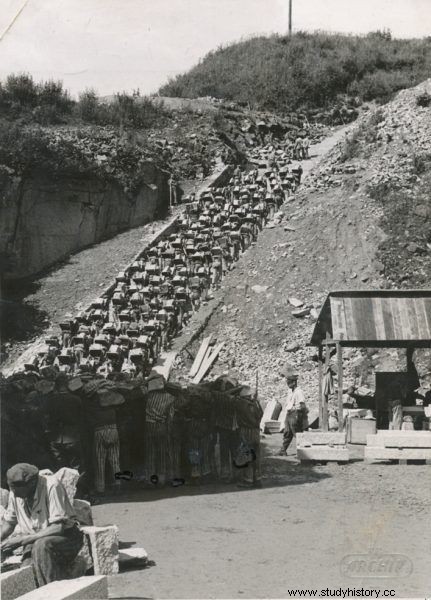
The stairs of death led to the quarry. If the prisoner was too weak, he was thrown from them into a nearby lake.
The hinterland of the "millennial Reich"
On the one hand, the Mauthausen-Gusen camp system was to serve as a place of detention and murder of prisoners of war, and on the other hand, it was planned as an economic base for the Reich's plans. At the beginning, the "Wiener Gruben" quarries were exploited, from where materials for the construction of the "Thousand-Year Reich" were obtained. The "Deutsche Erd- und Steinwerke GmbH" company - DEST for short, established on April 29, 1938 by the SS and the German police, was in charge of the extraction. The company's goal was to supply stone for the construction of the largest enterprises of the Reich, but not only. Himmler and Pohl wanted to make it a model for a company with mass production supported by modern technology.
Work in the quarries was carried out without any security. The prisoners did not receive gloves, shoes or specialized clothing, not to mention helmets or machines to help. In order not to damage the camp clothes, they were even ordered to take off their shirts and transport blocks on their bare shoulders. The prisoners were forced to run both ways, once with the stones and sometimes without.
The mighty death staircase led to the Mauthausen quarry . Along them were SS men who looked after the prisoners carrying loads. If one carried a block that was too small, it did it too slowly or fell to the guards in any other way, it was knocked together with a stone into a nearby lake.
Gusen II - the death factory
Gusen II was one of the cruelest camp detachments. In its area there was a construction of underground tunnels "Bergkristall-Bau" (B8 Bergkristall). Weapons factories producing Messerschmitt Me 262 jets are located here.
These were the first such powered airplanes in combat. The production line was equipped with a technology that was very advanced at that time. The prisoners used pneumatic tools, rivets were used to connect the planes, 24-volt lighting was used in the tunnels, and everything was powered by aggregates. Prisoners who survived the camp say that each day, together with their group, they produced two airplane hulls with a tank.
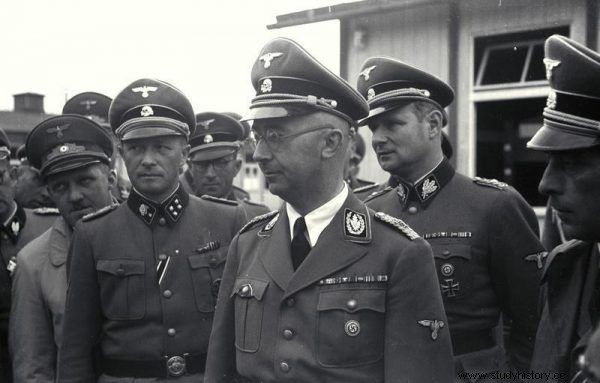
Himmler visited the Mauthausen-Gusen camp twice. In the photo from the left:Ziereis, Himmler, Wolf in 1941.
In the Gusen II sub-camp, the average prisoner life expectancy was 4 months. In addition to murderous work and quick death, this unit also had the most brutal guards. Even more terrifying is the fact that the prisoners were not guarded by the Nazis here. For this task, extremely brutal kapos were sent here - prisoners-criminals from other branches of the camp.
Due to the cooperation with the authorities, the kapos had privileges, they received additional portions of food, and for tormenting prisoners, taking away their meals or even killing prisoners, they were not subject to any punishment. One of the capos of the Gusen II sub-camp, Jochan von Losen, killed 245 prisoners in one night. He hit some people in the head with a hammer or an ax, others drowned in stone bowls.
Sanitary conditions were also the worst in Gusen II. The barracks were so overcrowded that prisoners slept twice on bunks. It often happened that in the morning someone would wake up next to his friend's corpse.
Profits from slave labor
The relocation to the Steyer-Daimler-Puch factory producing weapons and vehicles gave the prisoners a better chance of survival. For good work, this factory sometimes awarded vouchers to a nearby brothel. Also, the prisoners could receive a bonus that they could then sell to the blocs for food, e.g. 12 extra servings of soup.
Other companies using the slave labor of KL Mauthausen-Gusen prisoners were Accumulatoren-Fabrik AFA producing batteries for U-boats, Deutsche Bergwerks- und Hüttenbau, Eisenwerke Oberdonau producing steel for German Panzer tanks, Flugmotorenwerke Ostmarkt producing aircraft engines, Heinkels. Machines and rockets were produced for Raxwerke. Weapons and ammunition were made here for the companies Otto Eberhard Patronenfabrik and Österreichische Sauerwerks. The company Universale Hoch und Tiefbau also used slave labor in the camp to construct tunnels.
Bayer also played a part in the slave labor. The companies also benefited from medical experiments carried out here on prisoners. In 1912 Carl Duisberg became CEO of Bayer and in 1925 he headed the chemical group IG Farben. The company was responsible, inter alia, for the production of Zyklon B used to exterminate prisoners in concentration camps.
"You'll get out through the chimneys soon"
In the Mauthausen-Gusen camp, death by gassing was one of the lightest and most "humane". In addition to being forced down the stairs of death, prisoners were tortured here with thick clubs and then abandoned . The agony lasted from 30 minutes to an hour. Meanwhile, the prisoner was struggling to catch his breath.
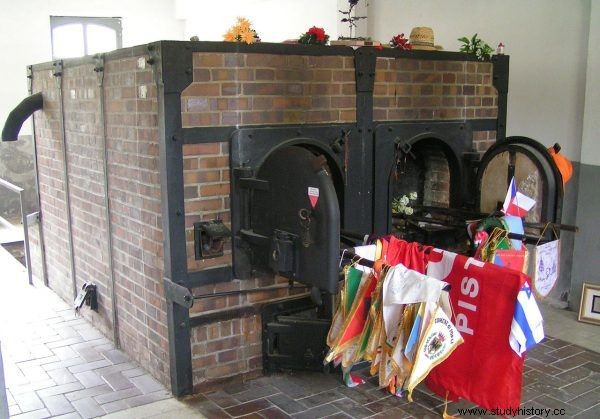
With time, so many prisoners died that crematoria were built in the camp.
There were also sanitary inspections in the camp. The slightest oversight, such as a torn shirt, was punished with beatings. The man, tortured in this way, then went to work, but due to his injuries, he was not able to work well enough. So he was beaten again. The prisoners, tortured in this way, finally did not have the strength to get out of bed. Being unfit for work, they were stripped and thrown to the toilet, where they died for the next two to three days.
Another form of extermination was killing by starvation. The prisoners were thrown into a barrack mockingly known as the "train station to heaven".
The camp commandant Gusen Karl Chmielewski showed exceptional cruelty in this area. On his orders, prisoners were killed by murderous baths. The sick and those unable to work were placed in showers, from which, under very high pressure, icy water was run on them for about 30 minutes. Some of the prisoners drowned, some died in fatal falls, the rest soon after from pneumonia. The so-called Totbadeaktion took place from September 29, 1941 to January 1942 and killed about 2,000 prisoners.
Liberation
On the news of the approaching front, Heinrich Himmler ordered the murder of all prisoners in the camp. Witnesses mention that they were herded into the tunnels, locked cyclones B there with a barrel, and then ... released for no known reason.
Why was an order not obeyed? This is a mystery to historians. We know that there were electricians among the inmates who cut the cables in the tunnel, but it is not known for certain whether this was the direct cause of their survival. Commander Ziereis, in his last testimony, believed that he personally opposed the execution of this order.
On May 5, 1945, an American tank led by Sergeant Albert Kosiek, a Pole by origin, entered the camp. When the prisoners realized what had happened, they suddenly felt emotional grabbing for anything that could be used as a weapon. They attacked capos and their executioners. Some have even done it with their bare hands. Survivors recall that Soviet prisoners captured one of the executioners and literally tore him to shreds.
When the crowd calmed down a bit, the prisoners went to the surrounding villages and collected all the things that could be eaten. During the night, the camp turned into a campsite with bonfires - a field kitchen, where everyone present tried to satisfy their hunger. This field turned into a graveyard in the morning.
Only those groups survived where someone was wise enough that even at the cost of hitting hungry people's hands, he gave them small portions of food.
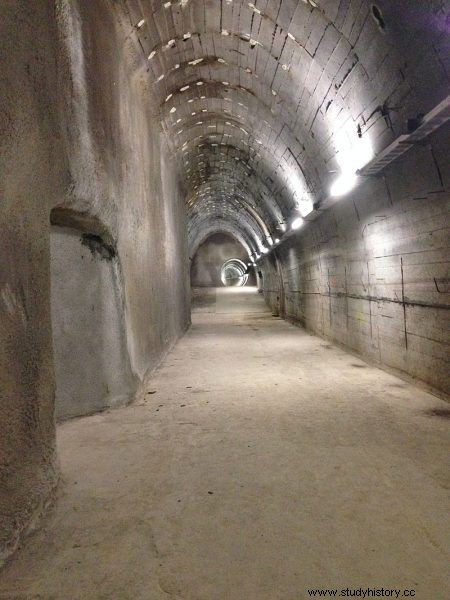
A contemporary view of one of the Bergkristall-Bau tunnels entered on the list of monuments
The day after the liberation, at the request of General Eisenhower, scenes of liberation were arranged in the camp. This propaganda movement was aimed at capturing photos and filming these events.
Commander Ziereis fled with his family to the mountains, where he tried to hide from the consequences of his actions. On May 23, 1945, he was shot by the Americans. He died after giving his last lengthy testimony. He described in detail all the crimes that were committed in the camp, while claiming that he was innocent. His body was handed over to the prisoners of the camp. They were mutilated, marked with a swastika and marked "Heil Hitler", and then hung naked on the barbed wire of the camp.
Post-war fate
The Soviets took over the camp. In 1945, the barracks were used as buildings for the army, and the quarries were operated. At the same time, the camp structures were dismantled. During a visit in 2003, surviving Soviet officers said that the order to demolish came from Stalin himself.
In 1955, the Soviets withdrew from Austria. And over time, people began to settle in these areas. Thus, most of the area where the camp was located fell into private hands . Most of the buildings were removed and housing estates were built. Other buildings have been converted into residential buildings, sometimes also as villas. There is also a mushroom farm, a brothel was turned into a residential house, and the quarries were further exploited.
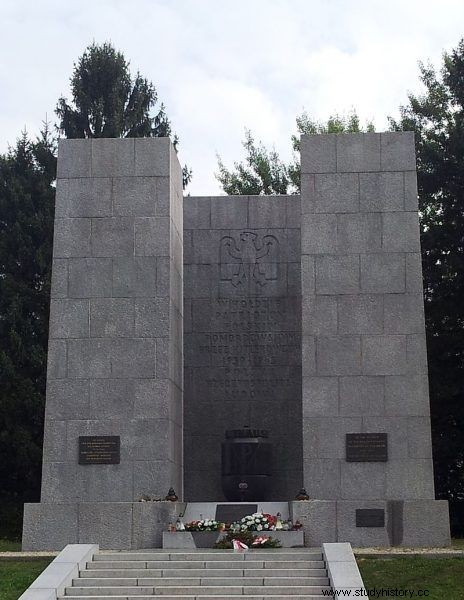
A monument to the Polish victims of the camp, designed by Stanisław Sikora and Teodor Bursche, was built in Mauthausen-Gusen.
Part of the area was bought by former prisoners and in 1965 the construction of the Mauthausen Memorial was completed here. With time, the Austrian government bought the land on which the assembly square was located. The buildings in the quarry, which were to be liquidated, were saved by entering them on the list of monuments. Part of the "Bergkristall-Bau" structure was also saved after a state-owned company started pouring concrete over it. In 2001, a commemoration committee was established in KL Gusen, which in 2004 led to the opening of the KZ Gusen Information Center.
There is a place in Upper Austria where a beautiful landscape dominates, and not so long ago its inhabitants, when asked about the Nazi concentration camp, replied that "there was nothing like this here" . Thanks to the steps taken and the activities of many institutions, including the Polish government, awareness of the genocide in KL Mauthausen-Gusen is growing.
In spite of hell, a resistance movement arose in the camp during its lifetime, with the goal of keeping as many prisoners alive as possible as long as possible. It was conducted, among others on the border of the rescue excavations carried out in the camp and commissioned by the Nazis. Prison poetry was also created here, efforts were made to introduce a bit of culture to this hellish world.
A total of about 335,000 prisoners were placed in KL Mauthausen-Gusen. It is estimated that between 71,000 and 122,000 people died here. 169 nationalities were held here, the largest group of which were Poles, followed by the Soviets. In the Gusen sub-camp, about 80% of the victims were Poles, including prof. Wiktor Ormicki - professor of geography at the Jagiellonian University, Kazimierz Pruszyński - inventor of the aeroscope of the world's first handheld camera, priest Edmund Kałach - tortured for refusing to believe in Hitler's divinity. And many more.
Let's remember.
